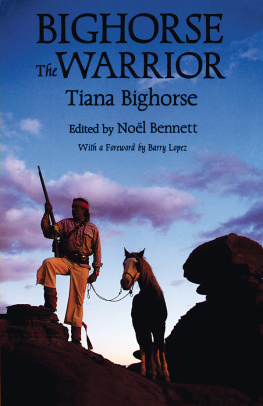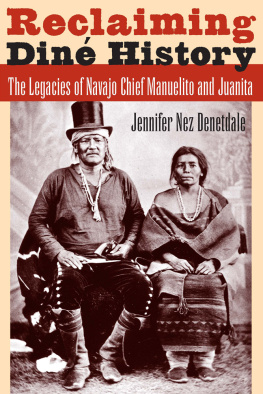Tiana Bighorse - Bighorse the Warrior
Here you can read online Tiana Bighorse - Bighorse the Warrior full text of the book (entire story) in english for free. Download pdf and epub, get meaning, cover and reviews about this ebook. year: 1994, publisher: University of Arizona Press, genre: Home and family. Description of the work, (preface) as well as reviews are available. Best literature library LitArk.com created for fans of good reading and offers a wide selection of genres:
Romance novel
Science fiction
Adventure
Detective
Science
History
Home and family
Prose
Art
Politics
Computer
Non-fiction
Religion
Business
Children
Humor
Choose a favorite category and find really read worthwhile books. Enjoy immersion in the world of imagination, feel the emotions of the characters or learn something new for yourself, make an fascinating discovery.
- Book:Bighorse the Warrior
- Author:
- Publisher:University of Arizona Press
- Genre:
- Year:1994
- Rating:4 / 5
- Favourites:Add to favourites
- Your mark:
Bighorse the Warrior: summary, description and annotation
We offer to read an annotation, description, summary or preface (depends on what the author of the book "Bighorse the Warrior" wrote himself). If you haven't found the necessary information about the book — write in the comments, we will try to find it.
I want to talk about my tragic story, because if I dont, it will get into my mind and get into my dream and make me crazy.
When the Navajos were taken from their land by the federal government in the 1860s, thousands lost their lives on the infamous Long Walk, while those who eluded capture lived in constant fear. These men and women are now dead, but their story lives on in the collective memory of their tribe.
Gus Bighorse lived through that period of his peoples history, and his account of itrecalled by his daughter Tiana and retold in her fathers voiceprovides authentic glimpses into Navajo life and values of a century ago. Born around 1846, Gus was orphaned at sixteen when his parents were killed by soldiers, and he went into hiding with other Navajos banded together under chiefs like Manuelito. Over the coming years, he was to see members of his tribe take refuge in Canyon de Chelly, endure the Long Walk from Fort Defiance to Bosque Redondo in 1864, and go into hiding at Navajo Mountain. Gus himself was the leader of one of Manuelitos bands who fought against Kit Carsons troops.
After the Navajos were allowed to return to their land, Gus took up the life of a horseman, only to see his beloved animals decimated in a government stock reduction program.
I know some people died of their tragic story, says Gus. They think about it and think about how many relatives they lost. Their parents got shot. They get into shock. That is what kills them. That is why we warriors have to talk to each other. We wake ourselves up, get out of the shock. And that is why I tell my kids what happened, so it wont be forgot. Throughout his narrative, he makes clear those human qualities that for the Navajos define what it is to be a warrior: vision, compassion, courage, and endurance.
Befitting the oral tradition of her people, Tiana Bighorse draws on her memory to tell her fathers story. In doing so, she ensures that a new generation of Navajos will know how the courage of their ancestors enabled their people to have their reservation today: They paid for our land with their lives. Following the text is a chronology of Navajo history, with highlights of Gus Bighorses life placed in the context of historical events.
Tiana Bighorse: author's other books
Who wrote Bighorse the Warrior? Find out the surname, the name of the author of the book and a list of all author's works by series.






 This book is printed on acid-free, archival-quality paper.
This book is printed on acid-free, archival-quality paper.